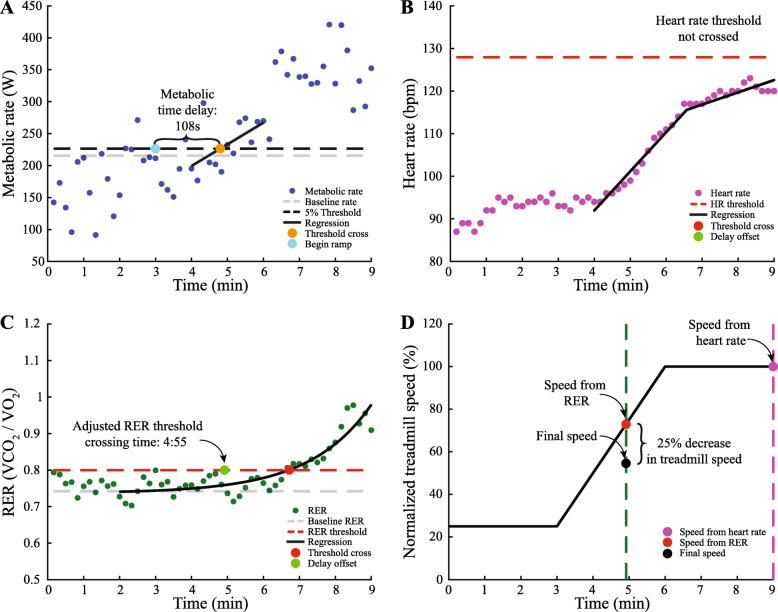Fig. 3.
Example speed selection protocol for participants with chronic stroke. a Metabolic rate used to find the time delay in the body’s response time. The baseline metabolic rate was the average rate between minutes two and three. Data were fit with linear regression between minutes four to six. The time the regression crossed the 5% increase in metabolic rate was found. The time delay was the difference between the threshold crossing and the onset of the treadmill speed increase. b Linear regressions on heart rate data to find the time when heart rate reaches the 78% maximum heart rate threshold. The time delay was subtracted from the time the heart rate regression crossed the threshold. The heart rate did not cross the threshold in this participant. c Exponential model fit between minutes two to nine on respiratory exchange ratio. The threshold for respiratory exchange ratio was the larger of 0.8 respiratory exchange ratio or a 5% increase from baseline respiratory exchange ratio. The time delay was subtracted from the time the exponential fit crossed the threshold. d Normalized treadmill speed throughout the protocol to map threshold times to speed. 75% of the slower speed between respiratory exchange ratio and heart rate was the speed selected for participants with chronic stroke

